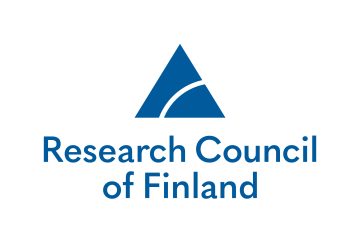Digital Twin
Smarter river basin management with a digital twin of the river?
Digital twin is a term that has started increasingly appearing within various fields of research. As any new concept, it deserves some explaining – what does a digital twin actually mean? How is it built? What can it do? We at the Freshwater Competence Centre are obviously asking: what can it do to improve environmental and river basin management?
Written by Anna-Kaisa Ronkanen, Maria Kämäri, Marie Korppoo & Olli Malve, Finnish Environment Institute SYKE
Edited by Annukka Pekkarinen, Napaja.org, Freshwater Competence Centre Principal Investigators from University of Turku, University of Oulu, Aalto university and Finnish Geospatial Research Institute FGI.
Digital Twin for a river environment is being developed within Green-Digi-Basin project, funded by European Union through Academy of Finland RRF funding.


Let’s start with the basics: What is a Digital Twin?
The concept of digital twin was launched in industrial manufacturing to support production optimization, process conceptualization or visualization. Since then, various visions and prototypes of digital twins e.g. for smart cities, urban water systems and agricultural purposes have been presented. An ongoing ambitious plan is the development of an European Digital Twin of the Ocean (European DTO) with financed by the European Commission. Nationally, digital twin Finland is under development via the working group established by GeoForum Finland ry. (Digital Twin Finland).
Despite the recent and exponentially increasing use of digital twins, there are not many representations of digital twins used for smart river basin management. Construction of a digital twin to support catchment scale planning and freshwater resource management poses a great challenge to improve present data collection and management, models, and services in the field of environmental and freshwater management. This challenge is now taken up by the Freshwater Competence Centre.
How is a digital twin built and what does it do?
The core elements of digital twins can be described by five entities including physical, digital, data storage, connections, and service entities (Deren et al. 2021). The physical entity includes instrumentation and devices for environmental mapping and monitoring. The digital entity may contain components like artificial intelligence, neural networks, physical models, or big data and data fusion processing tools, to analyse river basin related data (Gonzales-Inca et al. 2022). For such a data-intensive system, data storage and connections must be well planned and set up. The services that are at the core of the results are: information and scenarios for better decision making, better planning and management tools.
Co-creation should be activated in the development of a digital twin that the service components of a digital twin are suitable for different stakeholders. Researchers and environmental authorities will be able to view river basin management scenarios based on climate change and human actions to help assess different management plans. In addition, a digital twin could provide information and tools for entrepreneurs, local authorities and citizens based on their needs.
Potential components of digital twin for smart river basin management are linked to each other. The digital twin provides an up-to-date virtual representation for the catchment status linking catchment properties and functions to hydro-climatic environment. Most importantly the digital twin of a river basin should support sustainability transformation of modern societies. As such physical catchment modelling scenarios due to application of different nature base solution is relevant in providing information of the most efficient measures to reduce nutrient loadings into the water bodies.
Is a digital twin a key to sustainable river basins management?
The digital twin for a river basin should connect not only physical, chemical and biological but also socio-economic components to provide an in-depth understanding of the rationality and relevance of the measures to society. In the Freshwater Competence Centre, we will pool our strengths and expertise to continue the development towards a smarter digital twin for river basin management in Finland based on a common vision, sufficient funding for development, accessibility, and maintenance.
At the current stage, effects of changes in land use should be better estimated. For example, more information on the effects of nature-based solutions (NbS) is still needed. Novel monitoring and modelling technologies will play a key role in the development of new river basin services. We have selected three so called supersite catchments Vantaanjoki, Oulankajoki and Tenojoki, which will work as prototypes and platforms to establish the next generation digital twins for river basins.
Where do we stand – what already exists of a digital twin?
The Freshwater Competence Centre already masters several components of a digital twin. However, there are financial and technical issues as well as communication in the establishment of a common vision of a digital twin for river basins content between different stakeholders. Thus, we are aiming to combine the most advanced technological developments in data monitoring, mapping and management, as well as catchment scale and river channel modelling. Major steps towards a digital twin have already been taken, and here below we present two “blocks” that already exist and can be added as parts of the digital twin: a Data fusion tool and a river basin model called Vemala.
Data fusion – a block of digital entity
Finnish Environment Institute (SYKE) does routine monitoring and collection of data on lake, sea and river environments. The data is plentiful, but the question is: how to combine it together and even more importantly: how to make sense of it? For this purpose, SYKE has recently developed an operational system for multi-sensor data fusion (Gunia et al. 2022). This system combines Chlorophyll-a data and turbidity from routine monitoring stations, ferrybox measurements, and data derived from Medium Resolution Imaging Spectrometer (MERIS) instrument on board the ENVISAT satellite. All of this data is merged to present a coherent picture of chlorophyll-a situation in the Gulf of Finland. The system aims to improve water quality monitoring programs and for ensure compliance with ecological standards – by using modern technology to make it easier for us humans to view and understand complex data from various sources.
Participatory modelling and the river basin model VEMALA as components of a digital twin
The best way to increase commitment to monitoring and managing water resources is to make it as simple and easy as possible to the people who are responsible for these tasks. Finnish Environment Institute has a long experience and plays a key role in developing and implementing such cost-efficient and participatory operations model for the monitoring, modelling and management of lakes and river basins. (Malve 2007, Malve et al 2016).
The VEMALA model is a core element of the participatory modelling work in SYKE for environmental management projects. VEMALA is a real-time nutrient loading model (Huttunen et al., 2016; Korppoo et al., 2017) integrating environmental data from various databases and terrestrial and aquatic physical, chemical and biological processes to simulate water quality at a daily time-step for all Finnish river basins. Some of the VEMALA results are publicly available in vesi.fi service or on the SYKE website. However, more detailed results and scenario results like climate change and certain diffuse/point source mitigation scenarios are only available to subscribed users. The research version of the model is used, for example to simulate effects of gypsum treatment and agricultural mitigation measures on water amount and quality at the river basin scale. The environmental authorities (ELY-centers) use VEMALA results as well as other models to develop the river basin management plans.
We compiled a reading list for you in case you would like to dive deeper into the topic of digital twin
- Gonzales-Inca, C., Calle, M., Croghan, D., Torabi Haghighi, A., Marttila, H., Silander, J., & Alho, P. (2022). Geospatial Artificial Intelligence (GeoAI) in the Integrated Hydrological and Fluvial Systems Modeling: Review of Current Applications and Trends. Water 14, 2211. https://doi.org/10.3390/w14142211
- Gunia, M., Laine, M., Malve, O., Kallio, K., Kervinen, M., Anttila, S., Kotamäki, N., Siivola, E., Kettunen, J. & Kauranne, T. 2022. Data fusion system for monitoring water quality: Application to chlorophyll-a in Baltic sea coast. Environmental Modelling & Software. Vol 155. ISSN 1364-8152. https://doi.org/10.1016/j.envsoft.2022.105465.https://doi.org/10.1016/j.envsoft.2022.105465.
- Deren, L., Wenbo, Y. & Zhenfeng, S. (2021). Smart city based on digital twins. Comput. Urban Sci. 1, 4 https://doi.org/10.1007/s43762-021-00005-y
- Huttunen, I., Huttunen, M., Piirainen, V., Korppoo, M., Lepistö, A., Räike, A., Tattari, S., Vehviläinen, B., (2016). A national scale nutrient loading model for Finnish watersheds — VEMALA. Environ. Model. Assess. 21 (1), 83–109. https://doi.org/10.1007/ s10666-015-9470-6.
- Korppoo, M., Huttunen, M., Huttunen, I., Piirainen, V., Vehviläinen, B., (2017). Simulation of bioavailable phosphorus and nitrogen loading in an agricultural river basin in Finland using VEMALA v.3. J. Hydrol. 549, 363–373.
- Malve, O., Hjerppe, T., Tattari, S., Väisänen, S., Huttunen, I., Kotamäki, N., Kallio, K., Taskinen, A. & Kauppila, P. 2016. Participatory operations model for cost-efficient monitoring and modelling of river basins—A systematic approach. Science of The Total Environment, 540:79-89.https://doi.org/10.1016/j.scitotenv.2015.06.105
- Malve, O. 2007. Water quality prediction for river basin management. Doctoral dissertation. Helsinki University of Technology. Espoo, Finland. TKK-DISS-2292. ISBN 978-951-22-8749-9. URL: http://lib.tkk.fi/Diss/2007/isbn9789512287505/http://lib.tkk.fi/Diss/2007/isbn9789512287505/
- Mano, A., Malve, O., Koponen, S., Kallio, K., Taskinen, A., Ropponen, J., Juntunen, J., Liukko, N. 2015. Assimilation of Satellite Data to 3D Hydrodynamic Model of Lake Säkylän Pyhäjärvi. Water Science and Technology. 71(7): 1033–1039. https://doi.org/10.2166/wst.2015.042.
- Pedersen, A.N.; Borup, M.; Brink-Kjær, A.; Christiansen, L.E.; Mikkelsen, P.S. Living and Prototyping Digital Twins for Urban Water Systems: Towards Multi-Purpose Value Creation Using Models and Sensors. Water 2021, 13, 592. https://doi.org/10.3390/w13050592

